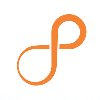Filter interviews by
Neilsoft Team Lead Interview Questions and Answers
Neilsoft Team Lead Interview Experiences
1 interview found
I applied via Referral and was interviewed in Dec 2023. There were 2 interview rounds.
Basic structural knowledge required
(2 Questions)
- Q1. What is mean by sc connection
- Ans.
SC connection refers to a type of fiber optic connector commonly used in networking.
SC stands for Subscriber Connector or Standard Connector.
It is a type of fiber optic connector with a push-pull locking mechanism.
SC connectors are used in networking applications for connecting fiber optic cables.
They are easy to install and provide reliable connections.
SC connectors are commonly used in data centers, telecommunication...
- Q2. What is connection types
- Ans.
Connection types refer to the different ways devices can connect to each other or to a network.
Wired connections (e.g. Ethernet, USB)
Wireless connections (e.g. Wi-Fi, Bluetooth)
Cellular connections (e.g. 4G, 5G)
Satellite connections
Fiber optic connections
Interview Preparation Tips
Skills evaluated in this interview
Top trending discussions






Interview questions from similar companies

I applied via Naukri.com and was interviewed in Nov 2024. There were 2 interview rounds.
Strike the workers to payment related
(2 Questions)
- Q1. Full knowledge by area
- Q2. All time attend phone
Interview Preparation Tips
- Excel

I applied via Naukri.com and was interviewed in Jun 2023. There were 2 interview rounds.

(2 Questions)
- Q1. OEE,FMEA, CC, LINE BALANCING,
- Q2. MTTR, MTBF, PERSONAL INTERVIEW

Interview Questionnaire
2 Questions
- Q1. Related to Renewable Energy and Operation and maintenance
- Q2. Salary negotiation
Interview Preparation Tips
Experience: Strong Industrial experience and education

I applied via Naukri.com and was interviewed in Nov 2024. There were 2 interview rounds.
Strike the workers to payment related
(2 Questions)
- Q1. Full knowledge by area
- Q2. All time attend phone
Interview Preparation Tips
- Excel

I applied via Naukri.com and was interviewed in Jun 2023. There were 2 interview rounds.

(2 Questions)
- Q1. OEE,FMEA, CC, LINE BALANCING,
- Q2. MTTR, MTBF, PERSONAL INTERVIEW

Production Team Leader Interview Questions & Answers
Escorts Kubota Limitedposted on 16 Feb 2021
Interview Questionnaire
8 Questions
- Q1. What is 5s
- Ans.
5S is a workplace organization method that aims to improve efficiency and productivity by eliminating waste and optimizing workflow.
Sort - separate necessary items from unnecessary ones
Set in order - arrange necessary items in a logical and efficient manner
Shine - clean and inspect the work area regularly
Standardize - establish procedures and guidelines for maintaining the 5S system
Sustain - ensure that the 5S system i...
- Q2. What is checksheet
- Ans.
A checksheet is a tool used to collect and organize data in a structured manner.
It is a simple form used to record data in a consistent manner
It helps to identify patterns and trends in the data
It can be used to monitor quality control processes
Examples include tally sheets, defect checklists, and inspection forms
- Q3. What is 7 qc tool
- Ans.
7 QC tools are a set of basic quality control tools used to identify and solve quality problems.
The tools include: Pareto chart, cause-and-effect diagram, check sheet, control chart, histogram, scatter diagram, and flowchart.
They are used to analyze data and identify the root cause of quality problems.
The tools are easy to use and can be applied to various industries and processes.
For example, a Pareto chart can be use...
- Q4. What is FRL
- Ans.
FRL stands for Filter, Regulator, and Lubricator. It is a device used in pneumatic systems to clean, regulate, and lubricate compressed air.
Filter removes impurities and moisture from compressed air
Regulator controls the pressure of compressed air
Lubricator adds oil mist to compressed air to lubricate moving parts
Used in pneumatic systems for machinery, tools, and equipment
Helps to extend the life of pneumatic componen
- Q5. What is take time
- Ans.
Take time refers to the amount of time required to complete a task or process.
It is important to accurately estimate take time to ensure efficient production.
Factors that can affect take time include equipment, materials, and worker skill level.
Take time can be improved through process optimization and training.
For example, if a production line has a take time of 10 minutes per unit, increasing efficiency could reduce
- Q6. What is DWM
- Ans.
DWM stands for Daily Work Management. It is a process used to manage daily work activities and improve productivity.
DWM involves setting daily goals and targets for the team
It includes tracking progress and identifying areas for improvement
DWM helps to prioritize tasks and ensure that work is completed efficiently
Examples of DWM tools include visual management boards and daily huddles
- Q7. Tpm
- Q8. What is just in time
Skills evaluated in this interview

Team Leader-Quality Assurance/Quality Control Interview Questions & Answers
Escorts Kubota Limitedposted on 16 Sep 2020
I applied via Referral and was interviewed before Sep 2019. There was 1 interview round.
Interview Questionnaire
12 Questions
- Q1. What's your quality improvement in last company
- Ans.
Implemented a new quality control process that reduced defects by 20% in the last company.
Implemented a new quality control process
Reduced defects by 20%
Trained team members on the new process
Conducted regular audits to ensure compliance
Collaborated with cross-functional teams to identify root causes of defects
- Q2. Tale me about the 7 QC tools
- Ans.
The 7 QC tools are a set of basic quality control tools used for process improvement.
Check sheets: used to collect data and record defects
Pareto charts: used to identify the most frequent defects
Cause-and-effect diagrams: used to identify the root cause of defects
Histograms: used to show the distribution of data
Scatter diagrams: used to show the relationship between two variables
Control charts: used to monitor process ...
- Q3. What's your roles and responsibility
- Ans.
As a Team Leader-Quality Assurance/Quality Control, my roles and responsibilities include overseeing quality control processes, ensuring compliance with standards, managing a team, and implementing quality improvement initiatives.
Overseeing quality control processes and procedures
Ensuring compliance with quality standards and regulations
Managing a team of quality control professionals
Implementing quality improvement in...
- Q4. Why you want to change your current job
- Ans.
I want to change my current job to explore new opportunities and challenges in a leadership role in quality assurance/quality control.
Seeking career growth and advancement
Interested in taking on more responsibilities
Looking for a leadership role to utilize my skills and experience
Want to work in a different industry or company
Desire to contribute to a team and make a positive impact
- Q5. PDCA cycle
- Q6. Process flow of your area
- Ans.
Our area follows a strict process flow to ensure quality control and assurance.
We begin by reviewing the product specifications and requirements.
Next, we create a plan for testing and inspection.
We then execute the plan and document any issues or defects found.
If necessary, we make adjustments to the process and retest.
Finally, we approve the product for release or recommend further action.
Examples of our process flow ...
- Q7. What is KAPA
- Ans.
KAPA is a quality control system used in various industries to ensure the accuracy and reliability of products or processes.
KAPA stands for Keep Accurate and Precise Assessments.
It is a set of procedures and techniques used to monitor and evaluate the quality of products or processes.
KAPA helps identify and rectify any deviations or defects in order to maintain high standards.
It involves regular inspections, testing, a...
- Q8. Tale me about kaizen
- Ans.
Kaizen is a Japanese term for continuous improvement.
Kaizen involves making small, incremental improvements to processes and systems.
It is a key principle of lean manufacturing and Six Sigma methodologies.
Kaizen encourages employee involvement and empowerment in the improvement process.
Examples of kaizen include reducing waste, improving efficiency, and enhancing quality.
Kaizen is a never-ending process that aims to co
- Q9. What is DWM
- Ans.
DWM stands for Data Warehouse Management.
DWM is the process of collecting, storing, and managing data from various sources.
It involves designing and maintaining a data warehouse to support business intelligence and decision-making.
DWM includes data cleaning, transformation, and integration to ensure data accuracy and consistency.
Examples of DWM tools include Oracle Warehouse Builder, Microsoft SQL Server Integration Se
- Q10. What is quality circle
- Ans.
Quality circle is a group of employees who voluntarily come together to identify and solve work-related problems.
Quality circle is a participatory management technique.
It involves a group of employees who meet regularly to identify and solve work-related problems.
The group is usually led by a facilitator and includes members from different departments.
The aim is to improve quality, productivity, and employee morale.
Exa...
- Q11. Tale me about PFMEA
- Ans.
PFMEA stands for Process Failure Mode and Effects Analysis.
It is a structured approach to identify and prioritize potential failures in a process.
It helps in developing preventive and corrective actions to reduce or eliminate the risk of failures.
It involves identifying failure modes, their effects, and causes, and assigning a severity, occurrence, and detection rating to each.
The ratings are then used to calculate a R...
- Q12. What is DPR
- Ans.
DPR stands for Daily Progress Report.
DPR is a document that records the daily progress of a project.
It includes information such as tasks completed, milestones achieved, and any issues or challenges faced.
DPR is used by project managers to track the progress of the project and make necessary adjustments.
It is also used to communicate the project status to stakeholders.
DPR can be in the form of a spreadsheet, a written
Interview Preparation Tips

Interview Questionnaire
2 Questions
- Q1. Related to Renewable Energy and Operation and maintenance
- Q2. Salary negotiation
Interview Preparation Tips
Experience: Strong Industrial experience and education
Neilsoft Interview FAQs
Tell us how to improve this page.
Neilsoft Interviews By Designations
- Neilsoft Junior Engineer Interview Questions
- Neilsoft React Developer Interview Questions
- Neilsoft Software Engineer Interview Questions
- Neilsoft Android Developer Interview Questions
- Neilsoft Applications Engineer Interview Questions
- Neilsoft Architect Interview Questions
- Neilsoft Associate Engineer Interview Questions
- Neilsoft Bim MEP Modeler Interview Questions
- Show more
Interview Questions for Popular Designations
- Team Lead Operations Interview Questions
- Sales Team Leader Interview Questions
- Senior Team Leader Interview Questions
- Team Leader (Technical) Interview Questions
- Team Leader (Nontechnical) Interview Questions
- Team Leader-Quality Assurance/Quality Control Interview Questions
- Assistant Team Leader Interview Questions
- Team Leader TL Interview Questions
- Show more
People are getting interviews through
Team Lead Interview Questions from Similar Companies
Fast track your campus placements
Neilsoft Team Lead Reviews and Ratings
based on 4 reviews
Rating in categories
|
Junior Engineer
177
salaries
| ₹2.5 L/yr - ₹5.2 L/yr |
|
BIM Engineer
87
salaries
| ₹3 L/yr - ₹10 L/yr |
|
Engineer
70
salaries
| ₹3 L/yr - ₹9 L/yr |
|
Software Engineer
61
salaries
| ₹3.2 L/yr - ₹9.8 L/yr |
|
Design Engineer
61
salaries
| ₹2.5 L/yr - ₹8 L/yr |

TCS

Infosys

Wipro

Tech Mahindra
Calculate your in-hand salary
- Home >
- Interviews >
- Neilsoft Interview Questions >
- Neilsoft Team Lead Interview Questions








